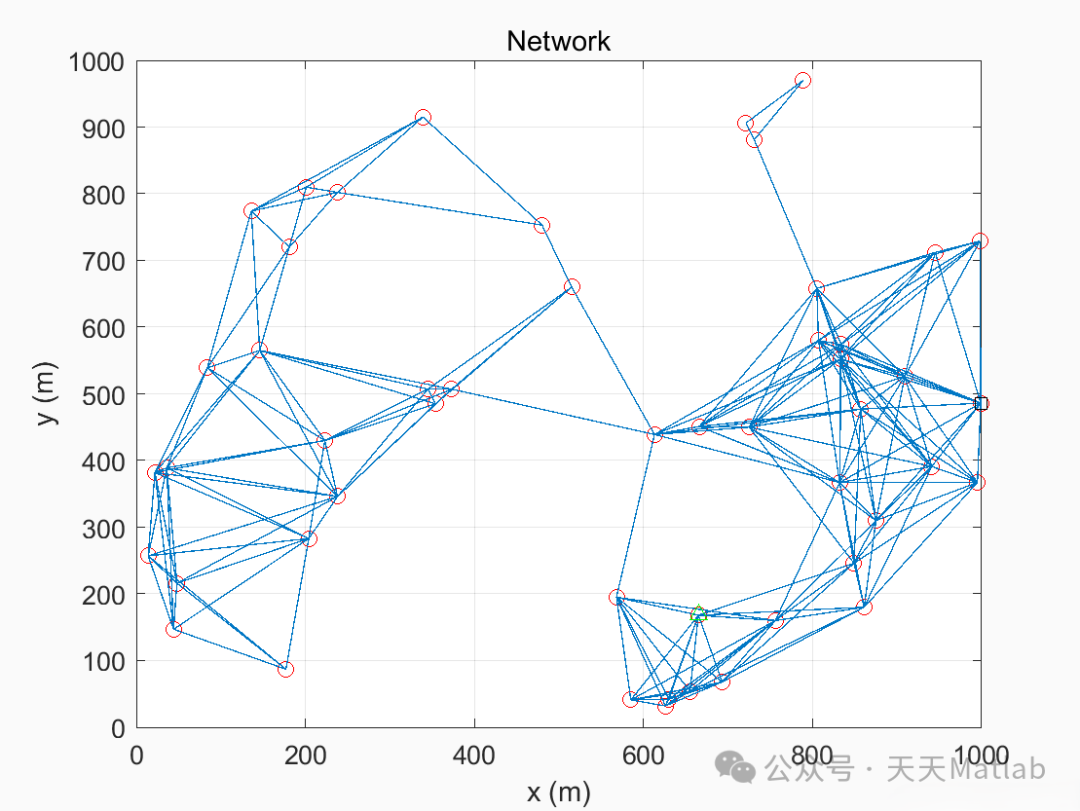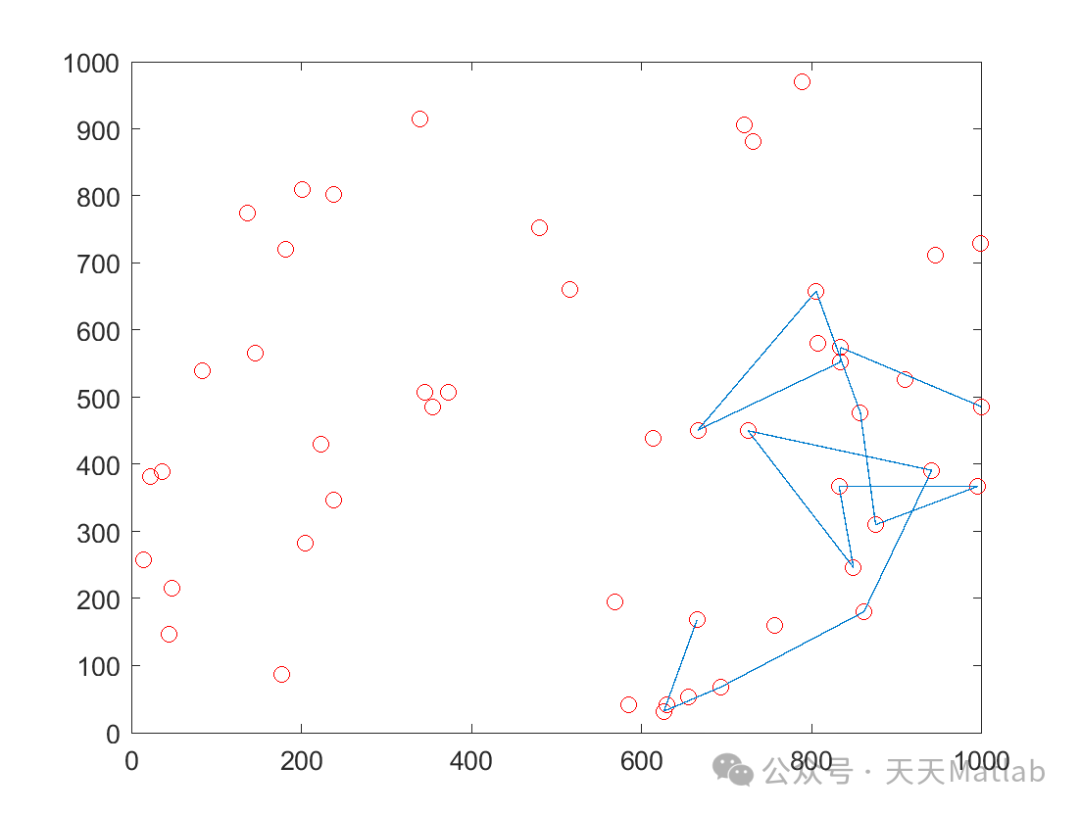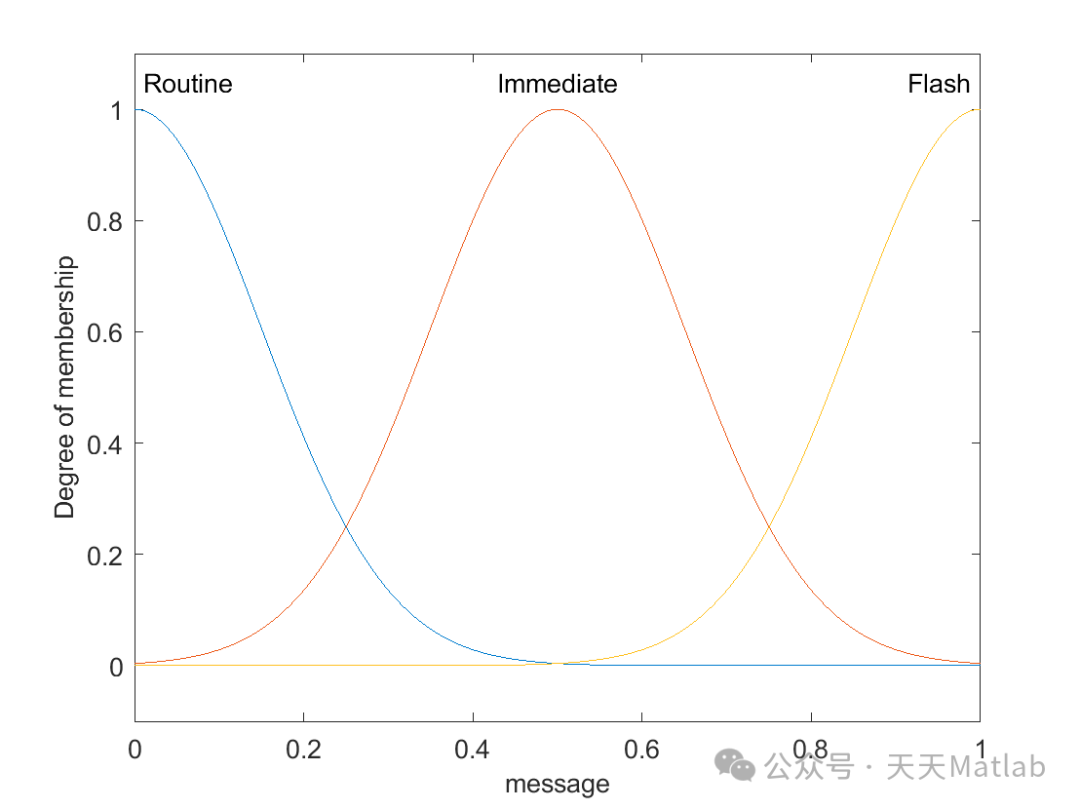✅ Author Introduction: A research enthusiast and Matlab simulation developer, skilled in data processing, modeling simulation, program design, obtaining complete codes, reproducing papers, and research simulation.
🍎 Personal Homepage:Matlab Research Studio
🍊 Personal Motto: Seek knowledge through things, complete Matlab code and simulation consultation content via private message.
🌿 For past reviews, you can follow the homepage and click search
Intelligent Optimization Algorithms Neural Network Prediction Radar Communication Wireless Sensors Power Systems
Signal Processing Image Processing Path Planning Cellular Automata Unmanned Aerial Vehicles
Physical Applications Machine Learning Series Workshop Scheduling SeriesFiltering and Tracking Series Data Analysis Series
Image Processing Series
🔥 Content Introduction
The method for improving wireless sensor network (WSN) routing and packet delivery based on the Mamdani fuzzy inference system aims to solve issues such as energy constraints, uneven node distribution, and packet loss in WSNs. This method integrates fuzzy logic to comprehensively evaluate parameters such as node energy, distance, and channel quality, dynamically adjusting routing strategies to enhance packet delivery success rates and extend network lifespan.
Principle of Mamdani Fuzzy Inference System
The Mamdani fuzzy inference system is a reasoning system based on fuzzy logic, which includes the following key components:
-
Fuzzification: The process of mapping input data from precise values to fuzzy sets, typically implemented using membership functions.
-
Rule Base: Contains a set of fuzzy rules, each consisting of premises and conclusions, where premises are fuzzy sets, and conclusions are either fuzzy sets or precise values.
-
Fuzzy Inference: Based on the rules in the rule base and fuzzified input data, reasoning is performed using fuzzy logic to produce fuzzy outputs.
-
Defuzzification: The process of converting fuzzy outputs back to precise values, commonly using methods such as the centroid method or the maximum membership degree method.
Principle of Improved Routing and Packet Delivery
-
Node Energy Assessment: Using fuzzy logic to evaluate the health status of nodes based on their remaining energy and decide whether to select the node as part of the routing path.
-
Distance Assessment: Using fuzzy logic to evaluate the energy consumption of data transmission based on the distance between nodes and select the path with the least energy consumption.
-
Channel Quality Assessment: Using fuzzy logic to evaluate the reliability of data transmission based on channel quality (such as signal-to-noise ratio, bit error rate, etc.) and select the path with the best channel quality.
-
Routing Strategy Adjustment: Dynamically adjusting the routing strategy by integrating the assessment results of node energy, distance, and channel quality to choose the optimal routing path.
-
Packet Delivery: Transmitting packets from the source node to the destination node based on the adjusted routing strategy while monitoring the packet delivery process. If packet loss occurs, the routing path is re-selected.
Advantages
-
Dynamic Adaptability: Capable of dynamically adjusting routing strategies based on network status, adapting to network changes.
-
Energy Efficiency: Extends network lifespan by selecting the path with the least energy consumption.
-
Reliability: Increases the success rate of packet delivery by selecting the path with the best channel quality.
Considerations
-
Rule Base Design: Appropriate fuzzy rules need to be designed based on the actual network environment and application scenarios.
-
Membership Function Selection: The choice of membership functions will affect the results of fuzzy inference and needs to be selected based on actual conditions.
-
Defuzzification Methods: Different defuzzification methods will affect the final routing decisions and need to be selected based on actual requirements.
Conclusion
The method for improving wireless sensor network routing and packet delivery based on the Mamdani fuzzy inference system effectively enhances packet delivery success rates and extends network lifespan by comprehensively evaluating parameters such as node energy, distance, and channel quality using fuzzy logic and dynamically adjusting routing strategies. In practical applications, model design and parameter adjustments should be based on specific network environments and application scenarios.
⛳️ Run Results



🔗 References
[1] Feng Ranjian, Cheng Jian, Xu Xiaofeng, et al. A Trustworthy Cluster Head Election Algorithm for Wireless Sensor Networks Based on Mamdani Fuzzy Inference [J]. High Technology Communications, 2010(12):7. DOI:10.3772/j.issn.1002-0470.2010.12.008.
📣 Partial Code
🎈 Some theoretical references are from online literature. If there is any infringement, please contact the blogger for deletion.
👇 Follow me to receive a wealth of Matlab e-books and mathematical modeling materials
🏆 The team specializes in custom MATLAB simulations in various research fields to support research dreams:
🌈 Various intelligent optimization algorithm improvements and applications
Production scheduling, economic scheduling, assembly line scheduling, charging optimization, workshop scheduling, departure optimization, reservoir scheduling, three-dimensional packing, logistics site selection, cargo location optimization, bus scheduling optimization, charging station layout optimization, workshop layout optimization, container ship loading optimization, pump combination optimization, medical resource allocation optimization, facility layout optimization, visual domain base station and UAV site selection optimization, knapsack problem, wind farm layout, time slot allocation optimization, optimal distributed generation unit allocation, multi-stage pipeline maintenance, factory-center-demand point three-level site selection problem, emergency life material distribution center site selection, base station site selection, road lamp post arrangement, hub node deployment, transmission line typhoon monitoring devices, container scheduling, unit optimization, investment optimization portfolio, cloud server combination optimization, antenna linear array distribution optimization, CVRP problem, VRPPD problem, multi-center VRP problem, multi-layer network VRP problem, multi-center multi-vehicle VRP problem, dynamic VRP problem, two-layer vehicle routing planning (2E-VRP), charging vehicle routing planning (EVRP), oil-electric hybrid vehicle routing planning, mixed-flow workshop problem, order splitting scheduling problem, bus scheduling optimization problem, flight shuttle vehicle scheduling problem, site selection path planning problem, port scheduling, port bridge scheduling, parking space allocation, airport flight scheduling, leakage source location.
🌈 In the field of machine learning and deep learning, time series, regression, classification, clustering, and dimensionality reduction
2.1 BP time series, regression prediction, and classification
2.2 ENS voice neural network time series, regression prediction, and classification
2.3 SVM/CNN-SVM/LSSVM/RVM support vector machine series time series, regression prediction, and classification
2.4 CNN|TCN|GCN convolutional neural network series time series, regression prediction, and classification
2.5 ELM/KELM/RELM/DELM extreme learning machine series time series, regression prediction, and classification
2.6 GRU/Bi-GRU/CNN-GRU/CNN-BiGRU gated neural network time series, regression prediction, and classification
2.7 Elman recurrent neural network time series, regression prediction, and classification
2.8 LSTM/BiLSTM/CNN-LSTM/CNN-BiLSTM long short-term memory neural network series time series, regression prediction, and classification
2.9 RBF radial basis neural network time series, regression prediction, and classification
2.10 DBN deep belief network time series, regression prediction, and classification
2.11 FNN fuzzy neural network time series, regression prediction
2.12 RF random forest time series, regression prediction, and classification
2.13 BLS broad learning series time series, regression prediction, and classification
2.14 PNN pulse neural network classification
2.15 Fuzzy wavelet neural network prediction and classification
2.16 Time series, regression prediction, and classification
2.17 Time series, regression prediction, and classification
2.18 XGBOOST ensemble learning time series, regression prediction, and classification
2.19 Transform various combinations of time series, regression prediction, and classification
Directions cover wind power prediction, photovoltaic prediction, battery life prediction, radiation source identification, traffic flow prediction, load forecasting, stock price prediction, PM2.5 concentration prediction, battery health status prediction, electricity consumption prediction, water body optical parameter inversion, NLOS signal recognition, subway parking accurate prediction, transformer fault diagnosis.
🌈 In the field of image processing
Image recognition, image segmentation, image detection, image hiding, image registration, image stitching, image fusion, image enhancement, image compressed sensing.
🌈 In the field of path planning
Traveling Salesman Problem (TSP), Vehicle Routing Problem (VRP, MVRP, CVRP, VRPTW, etc.), UAV three-dimensional path planning, UAV cooperation, UAV formation, robot path planning, grid map path planning, multimodal transport problems, charging vehicle routing planning (EVRP), two-layer vehicle routing planning (2E-VRP), oil-electric hybrid vehicle routing planning, ship trajectory planning, full path planning, warehouse patrol.
🌈 In the field of UAV applications
UAV path planning, UAV control, UAV formation, UAV cooperation, UAV task allocation, UAV secure communication trajectory online optimization, vehicle cooperative UAV path planning.
🌈 In the field of communication
Sensor deployment optimization, communication protocol optimization, routing optimization, target localization optimization, Dv-Hop localization optimization, Leach protocol optimization, WSN coverage optimization, multicast optimization, RSSI localization optimization, underwater communication, communication upload and download allocation.
🌈 In the field of signal processing
Signal recognition, signal encryption, signal denoising, signal enhancement, radar signal processing, signal watermark embedding extraction, electromyography signals, electroencephalography signals, signal timing optimization, electrocardiogram signals, DOA estimation, encoding and decoding, variational modal decomposition, pipeline leakage, filters, digital signal processing + transmission + analysis + denoising, digital signal modulation, bit error rate, signal estimation, DTMF, signal detection.
🌈 In the field of power systems
Microgrid optimization, reactive power optimization, distribution network reconstruction, energy storage configuration, orderly charging, MPPT optimization, household electricity.
🌈 In the field of cellular automata
Traffic flow, crowd evacuation, virus spread, crystal growth, metal corrosion.
🌈 In the field of radar
Kalman filter tracking, trajectory association, trajectory fusion, SOC estimation, array optimization, NLOS recognition.
🌈 In workshop scheduling
No-wait flow shop scheduling problem (NWFSP), permutation flow shop scheduling problem (PFSP), hybrid flow shop scheduling problem (HFSP), no-idle flow shop scheduling problem (NIFSP), distributed permutation flow shop scheduling problem (DPFSP), blocking flow shop scheduling problem (BFSP).
👇